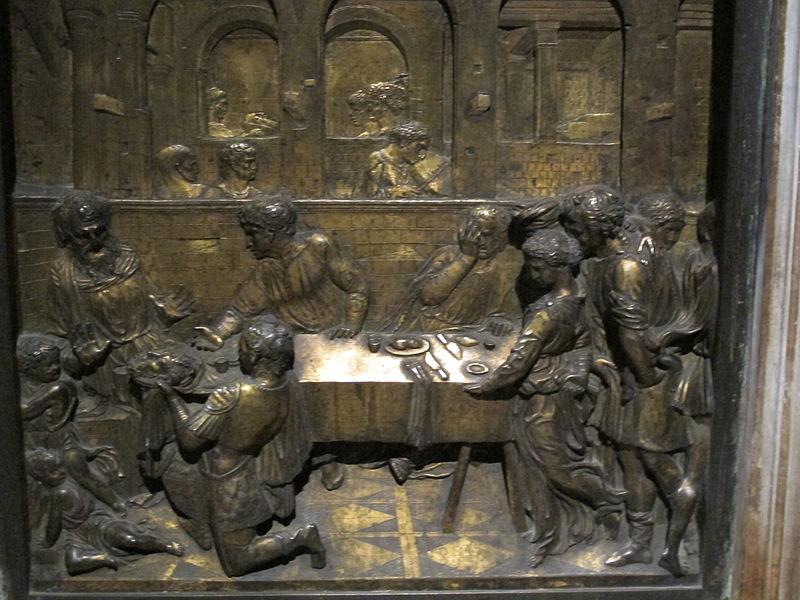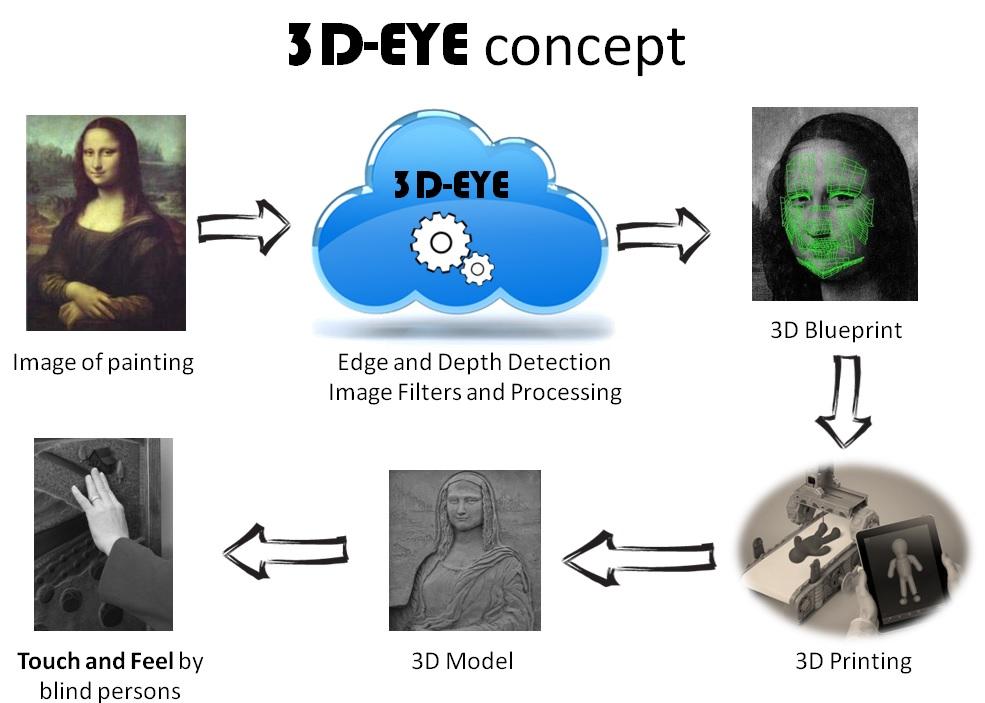The capacity of 3D printing to improve virtually every aspect of living cannot really be overstated. It holds particular promise for the visually impaired in many regards. From 3D printed Braille books with tactile illustrations, and detailed, topographical maps for assisting the blind in urgent situations like mass evacuations (in advance of a powerful tsunami, for instance), to three-dimensional reproductions of cherished photographs, 3D printing can be the facilitator of a more rich and informed life for the visually impaired.
One new startup company based in Athens, Greece, 3D-EYE, is developing a new product that will allow its users to scan two-dimensional images and create three-dimensional models that are 3D printer ready. The multidisciplinary team behind 3D-EYE is made up of specialized IT researcher Dr. Harilaos G. Koumaras, software developer and business analyst Vaios Koumaras, and a staff of software analysts and programmers, all avowed IT enthusiasts. They have launched an Indiegogo campaign to raise €150,000 (approximately US$187,000) to establish the business, acquire hardware, and hire a permanent staff. The team hopes to test a prototype of 3D-EYE by mid-2016, with the final product being available for commercial sale and use by the end of 2016.
images and create three-dimensional models that are 3D printer ready. The multidisciplinary team behind 3D-EYE is made up of specialized IT researcher Dr. Harilaos G. Koumaras, software developer and business analyst Vaios Koumaras, and a staff of software analysts and programmers, all avowed IT enthusiasts. They have launched an Indiegogo campaign to raise €150,000 (approximately US$187,000) to establish the business, acquire hardware, and hire a permanent staff. The team hopes to test a prototype of 3D-EYE by mid-2016, with the final product being available for commercial sale and use by the end of 2016.

The Feast of Herod, Donatello, bronze bas relief sculpture: Donatello
3D-EYE is a cloud-based platform designed to create three-dimensional blueprints of two-dimensional images. It includes a depth-scanning component that differentiates between objects in distance up to the foreground in a two-dimensional image and seems to prioritize those objects that are most prominent without eliminating important details beyond the main area of emphasis. The 3D printed image that results from the process of scanning and modeling will be something like one of the great Italian Renaissance sculptor Donatello’s ingenious bas relief sculptures such as The Feast of Herod (c. 1427), where objects in the foreground have considerable depth relative to the lightly inscribed imagery at the furthest distance from the picture plane. It sounds simple, but it’s really quite ingenious and complicated. Also, with 3D printing, the process is additive rather than subtractive as with Donatello’s chipping away.
The connection between experiencing art and 3D-EYE here is deliberate, as that is one of the primary selling points of the 3D-EYE marketing strategy and, evidently, one of the company’s goals overall. Whereas enjoyment of the visual arts has been generally impossible for those people who are acutely visually impaired, 3D-EYE will make it possible for them to experience art in a tactile rather than visual way. The 3D-EYE Indiegogo site uses graphics that demonstrate in a very basic way how the software will convert an image like the Mona Lisa by Leonardo Da Vinci to a three-dimensional, printer-ready model. Engaging with galleries and museums in this effort seems a promising avenue for this young company. Imagine companion displays of notable works of art that feature the original work and a 3D print provided expressly for experiencing the work in a tactile way.
3D-EYE suggests another very poignant, potential use for the software: converting a 3D fetal ultrasound to a 3D print. Of course, the potential applications where 3D-EYE is concerned are virtually limitless. Other potential avenues of use include applications in educational, government, business, and healthcare institutes, as well as exhibitions and galleries. The company’s emphasis on enhancing the lives of the visually impaired is certainly laudable.
What do you think of 3D-EYE’s mission and concept? Is their approach viable? Let us know your thoughts at the 3D-EYE forum on 3DPB.com!
Subscribe to Our Email Newsletter
Stay up-to-date on all the latest news from the 3D printing industry and receive information and offers from third party vendors.
You May Also Like
Precision at the Microscale: UK Researchers Advance Medical Devices with BMF’s 3D Printing Tech
University of Nottingham researchers are using Boston Micro Fabrication‘s (BMF) 3D printing technology to develop medical devices that improve compatibility with human tissue. Funded by a UK grant, this project...
3D Printing Webinar and Event Roundup: April 21, 2024
It’s another busy week of webinars and events, starting with Hannover Messe in Germany and continuing with Metalcasting Congress, Chinaplas, TechBlick’s Innovation Festival, and more. Stratasys continues its advanced training...
3D Printing Webinar and Event Roundup: March 17, 2024
It’s another busy week of webinars and events, including SALMED 2024 and AM Forum in Berlin. Stratasys continues its in-person training and is offering two webinars, ASTM is holding a...
3D Printed Micro Antenna is 15% Smaller and 6X Lighter
Horizon Microtechnologies has achieved success in creating a high-frequency D-Band horn antenna through micro 3D printing. However, this achievement did not rely solely on 3D printing; it involved a combination...





























